Noise Reduction in Helicopter Cabins Using Microperforated Panel Composite Sound Absorption Structures
Abstract
1. Introduction
2. Methodology
2.1. Mathematical Model of the MPP
2.2. Mathematical Model of the MPP+Porous Structure
2.3. Mathematical Model of the MPP+PAM
2.4. Design Parameters
3. Experiment
3.1. Test System
3.2. Vibration Level Test Results
3.3. Cabin Noise Test Results
3.3.1. Time Domain Analysis
3.3.2. Frequency Domain Analysis
- Compared with the original wall panel, the three structures evidently attenuate the cabin SPL in the range of the resonance peak and its nearby frequency band, with a maximum attenuation greater than 20 dB.
- Owing to the influence of the diffusion sound field, a new sound absorption band is formed, and the SPL with the three structures is attenuated by 10 dB, on average, over a wide frequency range of 1300–2000 Hz. The overall cabin noise level is effectively controlled.
- The MPP+PAM attains a significant cabin SPL attenuation in the range of 300–450 Hz, with an average noise reduction effect of 45%. It also achieves a good low-frequency sound absorption effect and maintains satisfactory broadband noise reduction effects in the middle- and high-frequency bands.
- Compared with the sound absorption performance of the ordinary MPP, those of the three structures are optimized to a certain extent. The Combined MPP substantially improves the sound absorption performance in the 600–1100 Hz and 1400–1800 Hz ranges. The MPP+Porous structure enhances the sound absorption performance in the range of 600–1200 Hz. The reason for the weak optimization effect of the porous material here is that this material needs to have a certain thickness to obtain the best sound absorption performance. After coupling with the MPP, the sound absorption performance is only significantly optimized near the resonance frequency. The sound absorption performance of the MPP+PAM is considerably improved in the 300–450, 600–900, and 1600–1800 Hz ranges.
4. Simulation
4.1. Simulation Object
4.2. Main Reducer Vibration Source Simulation
4.3. Model Cabin Sound Field Simulation
5. Conclusions
- The proposed MPP composite sound absorption structures can suppress the noise from the main gearbox in the target frequency band to a satisfactory degree.
- Based on the constructed finite element model of the helicopter main gear/body acoustic vibration coupling, the in-cabin noise reduction characteristics of the composite microperforated plate acoustic structures were obtained via simulation analysis. The simulation results show that the Combined MPP and MPP+Porous structure significantly improve the acoustic bandwidth and acoustic performance and can effectively reduce the cabin noise level in the range of 500–2000 Hz, with an attenuation amplitude of up to 35 dB. The MPP+PAM achieves low-frequency noise control in the range of 350–450 Hz and has a certain noise control effect in the middle- and high-frequency ranges.
- Based on the constructed model helicopter test platform, the cabin sound field conditions of composite acoustic structures equipped with microperforated panels were tested under real main gear vibration excitation. The cabin sound fields were compared with that of the original wall panel to verify the cabin noise reduction characteristics of the composite MPP acoustic structures. The test results show that the Combined MPP and MPP+Porous structure realize an overall cabin SPL attenuation of 8–10 dB, on average, in a wide frequency range of 500–2000 Hz, with an amplitude of more than 20 dB. The MPP+PAM achieves low-frequency sound absorption in the frequency range of 300–450 Hz; the sound absorption effect reaches 45%, and it also has good noise reduction effects in the middle- and high-frequency bands.
Author Contributions
Funding
Institutional Review Board Statement
Informed Consent Statement
Data Availability Statement
Conflicts of Interest
References
- Yu, Y.H. Rotor blade-vortex interaction noise. Prog. Aerosp. Sci. 2000, 36, 97–115. [Google Scholar] [CrossRef]
- Scheidler, J.J. A review of noise and vibration control technologies for rotorcraft transmissions. In Proceedings of the INTER-NOISE and NOISE-CON Congress, Hamburg, Germany, 21–24 August 2016; Institute of Noise Control Engineering: Hamburg, Germany, 2016; Volume 253, pp. 2986–2997. [Google Scholar]
- Szefi, J.T. Helicopter Gearbox Isolation Using Periodically Layered Fluidic Isolators. Ph.D. Thesis, The Pennsylvania State University, State College, PA, USA, 2003. [Google Scholar]
- Ma, X.; Lu, Y.; Wang, F. Active structural acoustic control of helicopter interior multifrequency noise using input-output-based hybrid control. J. Sound Vib. 2017, 405, 187–207. [Google Scholar] [CrossRef]
- Millott, T.A.; Yoerkie, C.A.; Welsh, W.A.; MacMartin, D.G.; Davis, M.W. Flight test of active gear-mesh noise control on the S-76 aircraft. In Proceedings of the American Helicopter Society 54th Annual Forum, Washington, DC, USA, 20–22 May 1998; The American Helicopter Society Inc.: Fairfax, VA, USA, 1998. [Google Scholar]
- Caillet, J.; Marrot, F.; Unia, Y.; Aubourg, P.-A. Comprehensive approach for noise reduction in helicopter cabins. Aerospa. Sci. Technol. 2012, 23, 17–25. [Google Scholar] [CrossRef]
- Ang LY, L.; Tran LQ, N.; Phillips, S.; Koh, Y.K.; Lee, H.P. Low-frequency noise reduction by earmuffs with flax fibre-reinforced polypropylene ear cups. Adv. Acoust. Vib. 2018, 2018, 2057820. [Google Scholar] [CrossRef]
- Sakagami, K.; Morimoto, M.; Yairi, M. Application of microperforated panel absorbers to room interior surfaces. Int. J. Acoust. Vib. 2008, 13, 120–124. [Google Scholar]
- Zha, X. Transparent micro-perforated sound-absorbing material improves the sound quality of the newly built parliament hall. Acoust. Technol. 1994, 13, 1–3. [Google Scholar]
- Mao, D.; Xia, J.; Hong, Z. Study on sound barrier based on micro-perforated panel structure with top absorbing cylinder. Acoust. Technol. 1999, 18, 26–29. [Google Scholar]
- Li, L.; Zhang, Z.; Huang, Q.; Li, S. A sandwich anechoic coating embedded with a micro-perforated panel in high-viscosity condition for underwater sound absorption. Compos. Struct. 2019, 235, 111761. [Google Scholar] [CrossRef]
- Wu, Q.; Liu, Y.; Li, Y.; Tan, L.; Yi, C. Simulation Study on Acoustic Performance of Ventilation Muffler of STC-GV Supercharger. Machinery 2021, 48, 8–13+19. [Google Scholar]
- Lee, W.Y.; Kim, J.C.; Noh, H.M. Application of a micro-perforated panel absorber to reduce the curve squeal noise of railways. Noise Control. Eng. J. 2021, 69, 507–517. [Google Scholar] [CrossRef]
- Chen, H. Research on Noise Reduction Method of Micro-Perforated Web Face Gear Transmission Based on Helmholtz Theory. Master’s Thesis, Nanjing University of Aeronautics and Astronautics, Nanjing, China, 2015. [Google Scholar]
- Markandan, K.; Lim, R.; Kumar Kanaujia, P.; Seetoh, I.; Bin Mohd Rosdi, M.R.; Huey Tey, Z.; Seng Goh, J.; Cheong Lam, Y.; Lai, C. Additive manufacturing of composite materials and functionally graded structures using selective heat melting technique. J. Mater. Sci. Technol. 2020, 47, 243–252. [Google Scholar] [CrossRef]
- Shen, J.; Lee, H.P.; Yan, X. Sound absorption performance and mechanism of flexible PVA microperforated membrane. Appl. Acoust. 2022, 185, 108420. [Google Scholar] [CrossRef]
- Liu, C.R.; Wu, J.H.; Yang, Z.; Ma, F. Ultra-broadband acoustic absorption of a thin microperforated panel metamaterial with multi-order resonance. Compos. Struct. 2020, 246, 112366. [Google Scholar] [CrossRef]
- Yan, S.; Wu, J.; Chen, J.; Mao, Q.; Zhang, X. Design of Honeycomb Microperforated Structure with Adjustable Sound Absorption Performance. Shock. Vib. 2021, 2021, 6613701. [Google Scholar] [CrossRef]
- Maa, D.-Y. Wide-Band sound absorber based on microperforated panels. Chin. J. Acoust. 1985, 3, 3–14. [Google Scholar]
- Maa, D.-Y. Theory and Design of Microperforated Panel Sound-Absorbing Constructions. Sci. Sin. 1975, 18, 55–71. [Google Scholar]
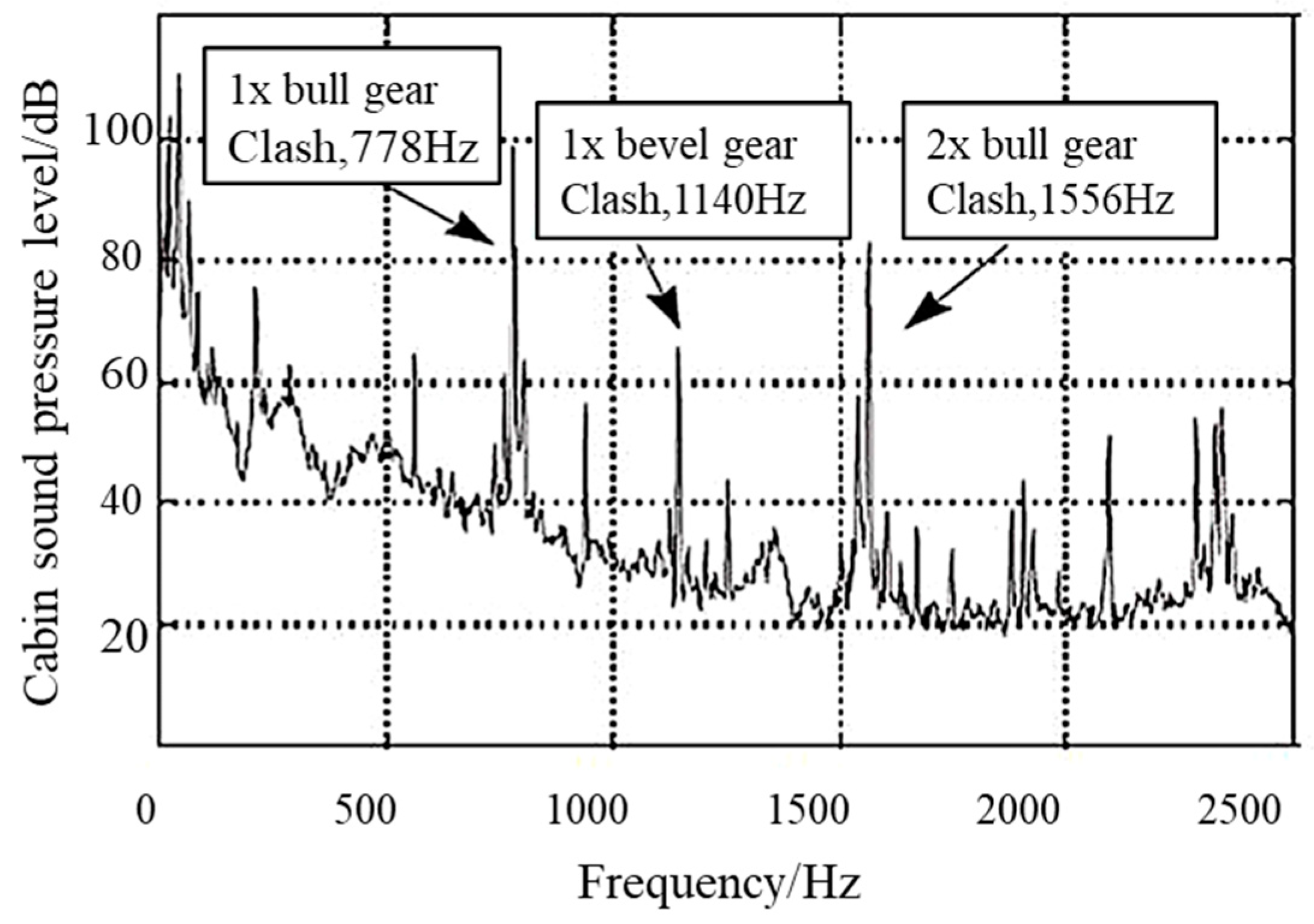
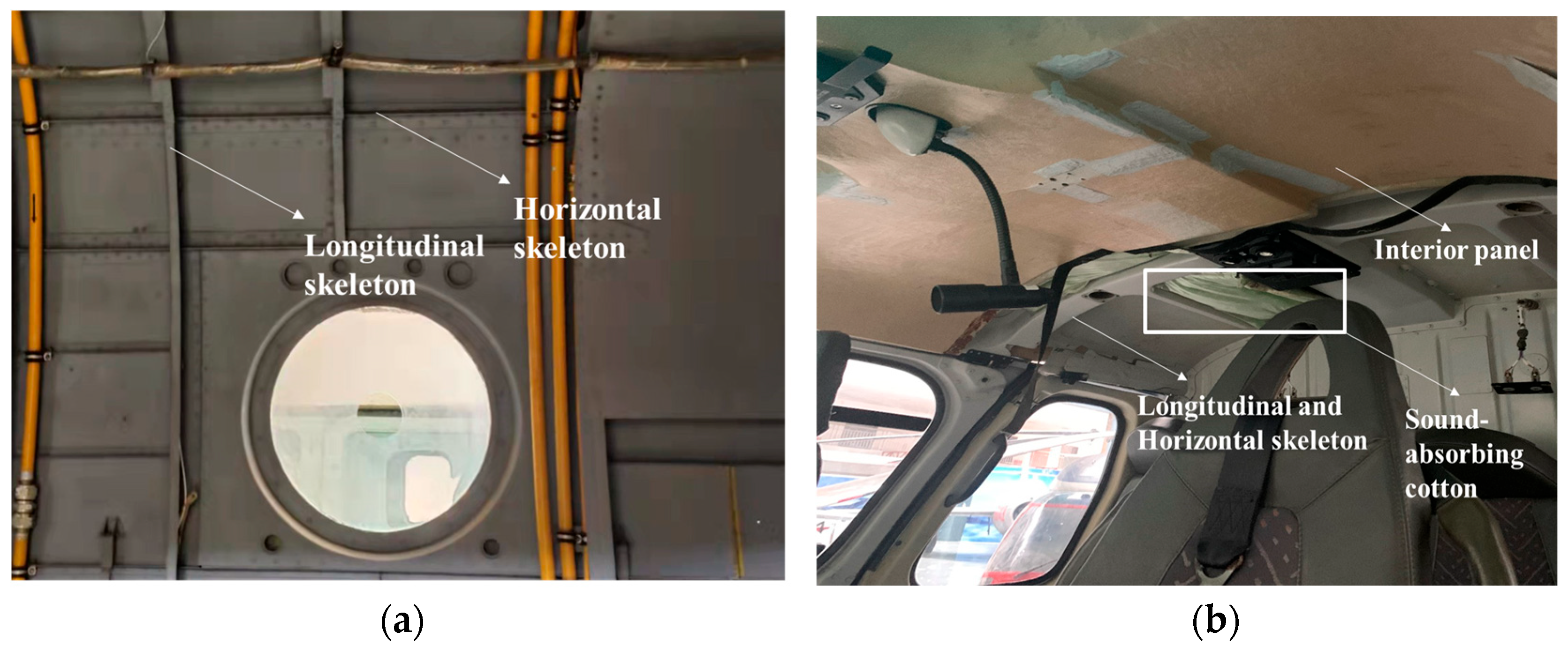
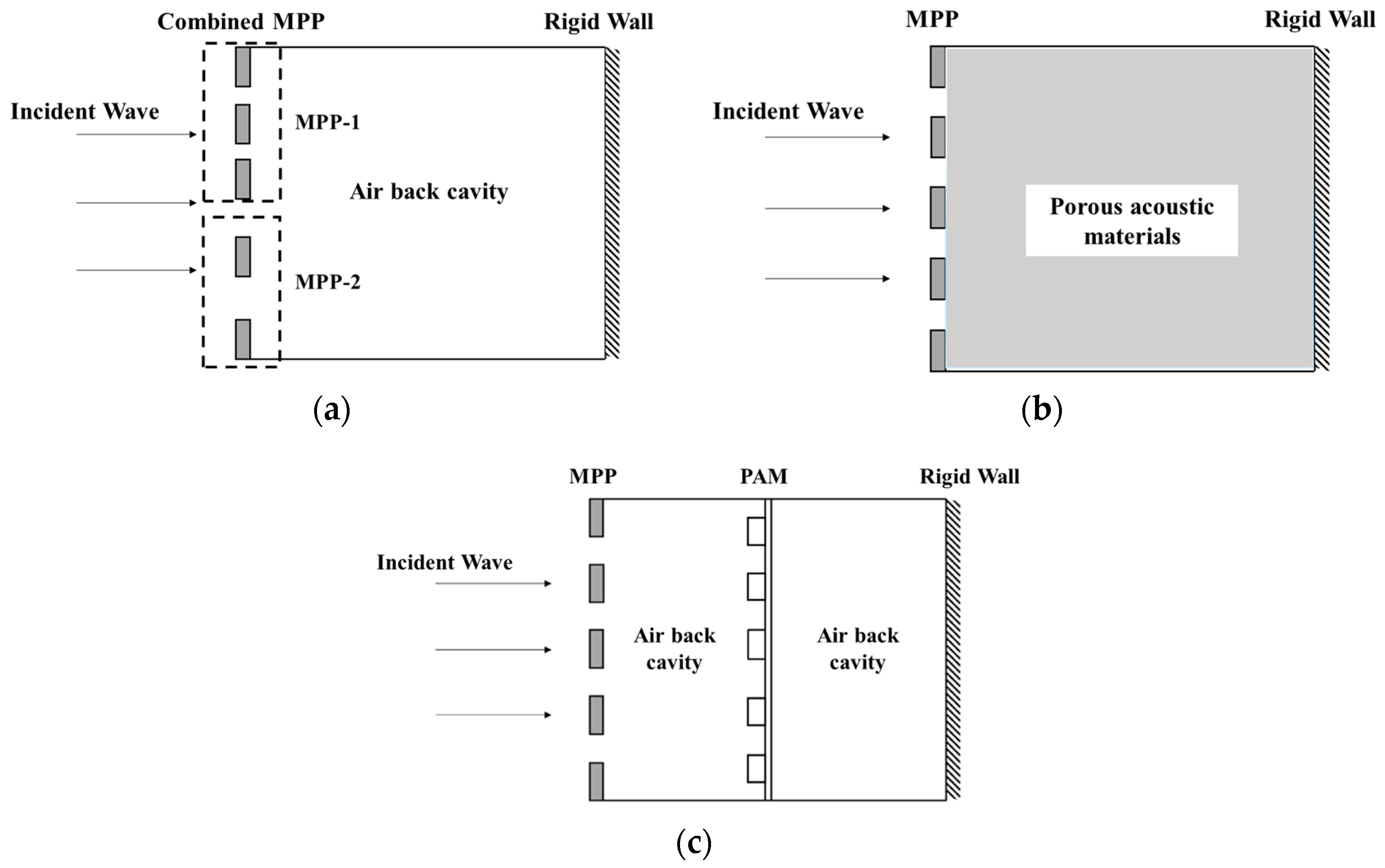
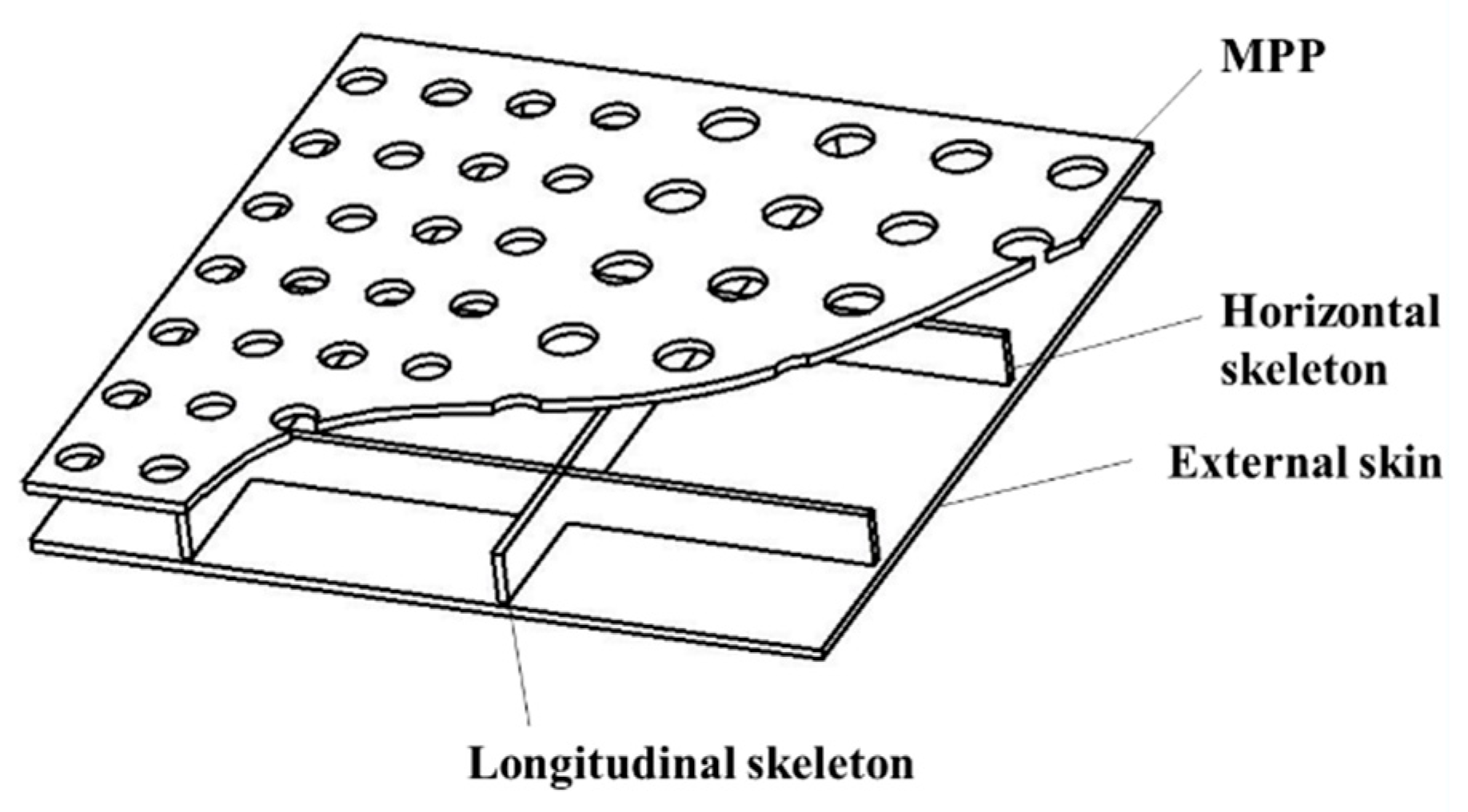
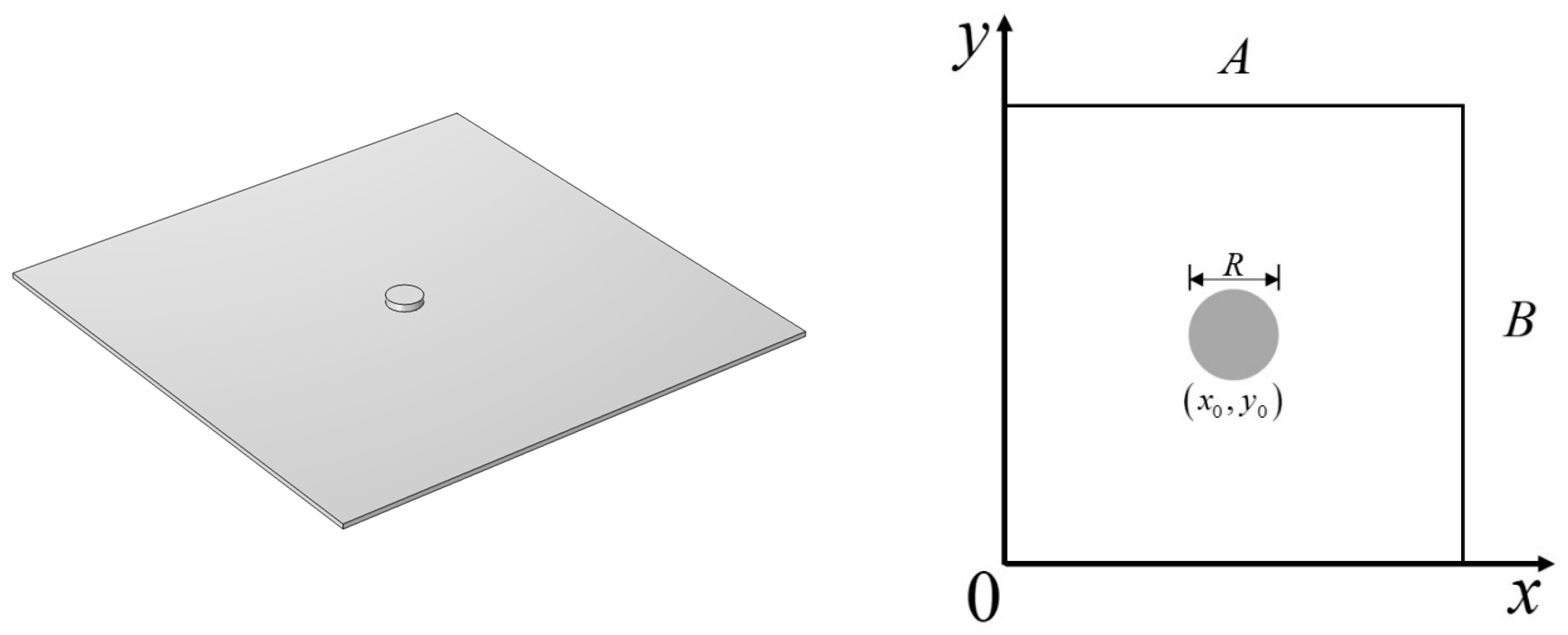
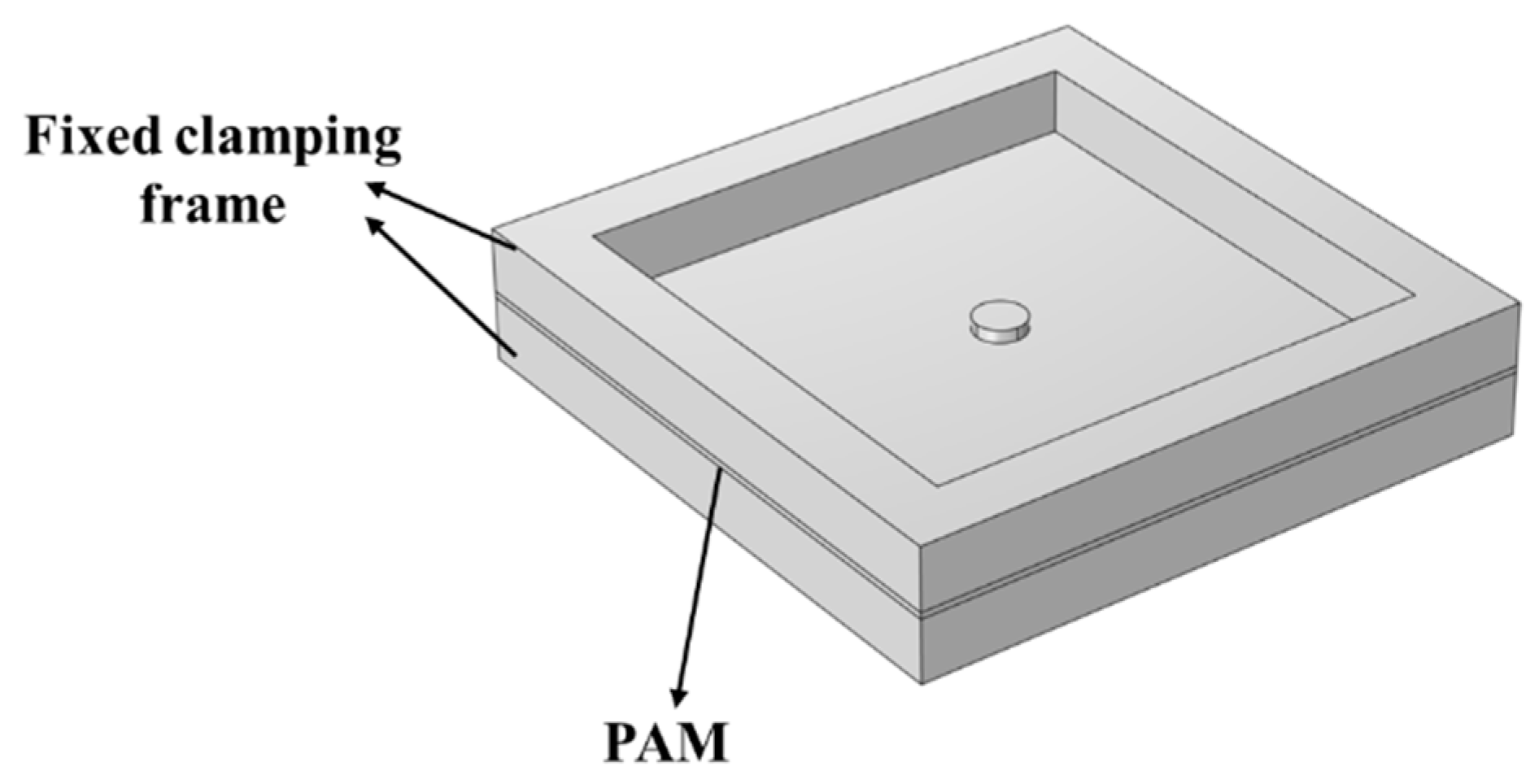

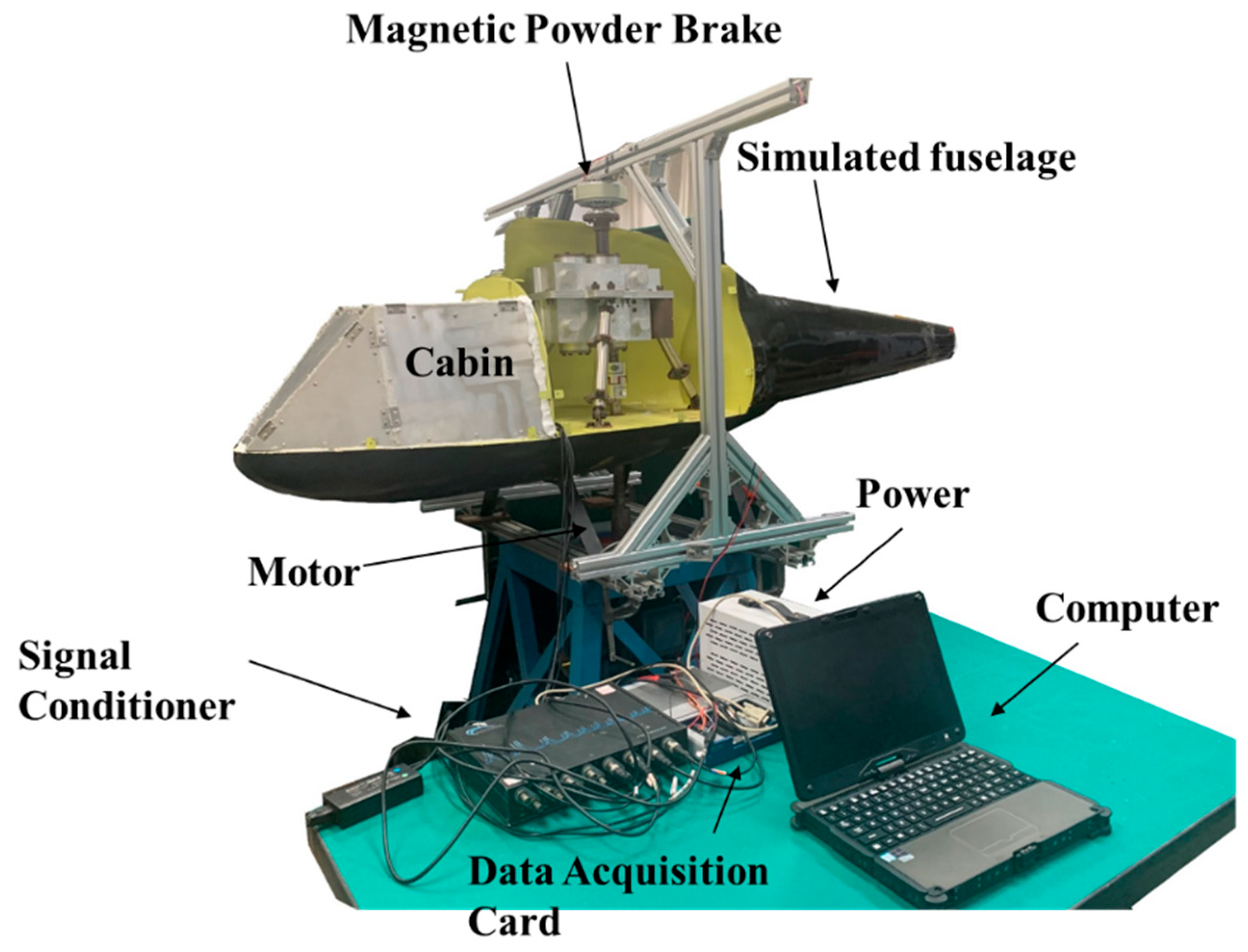

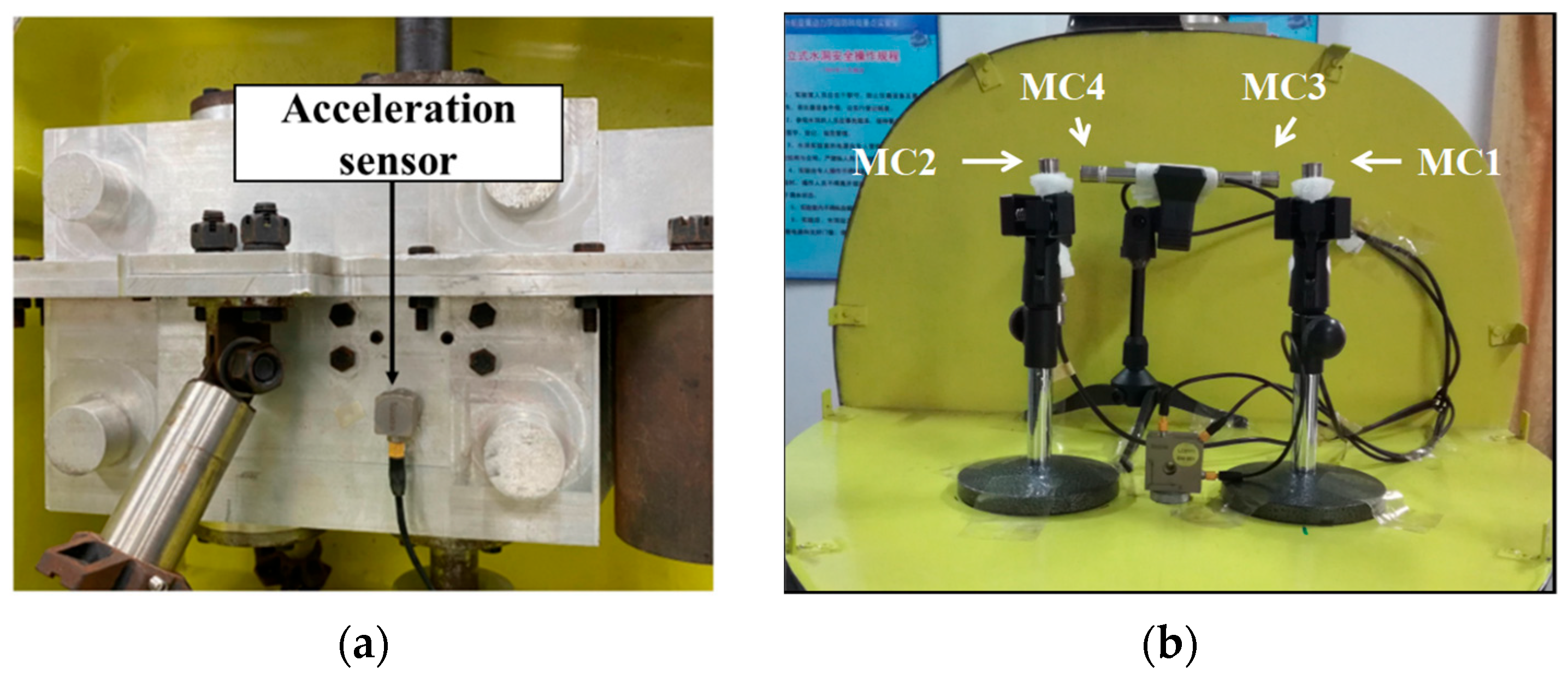
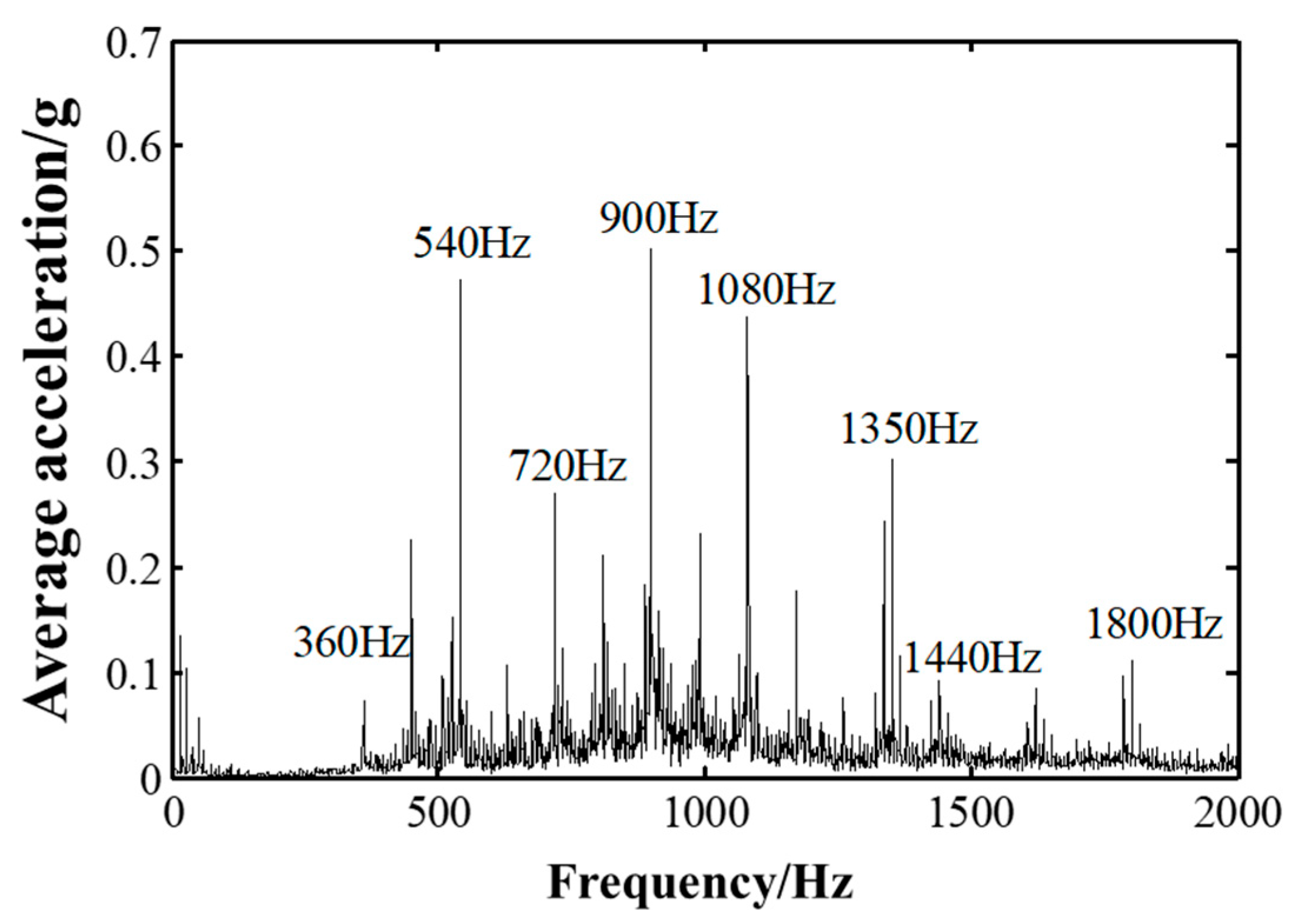





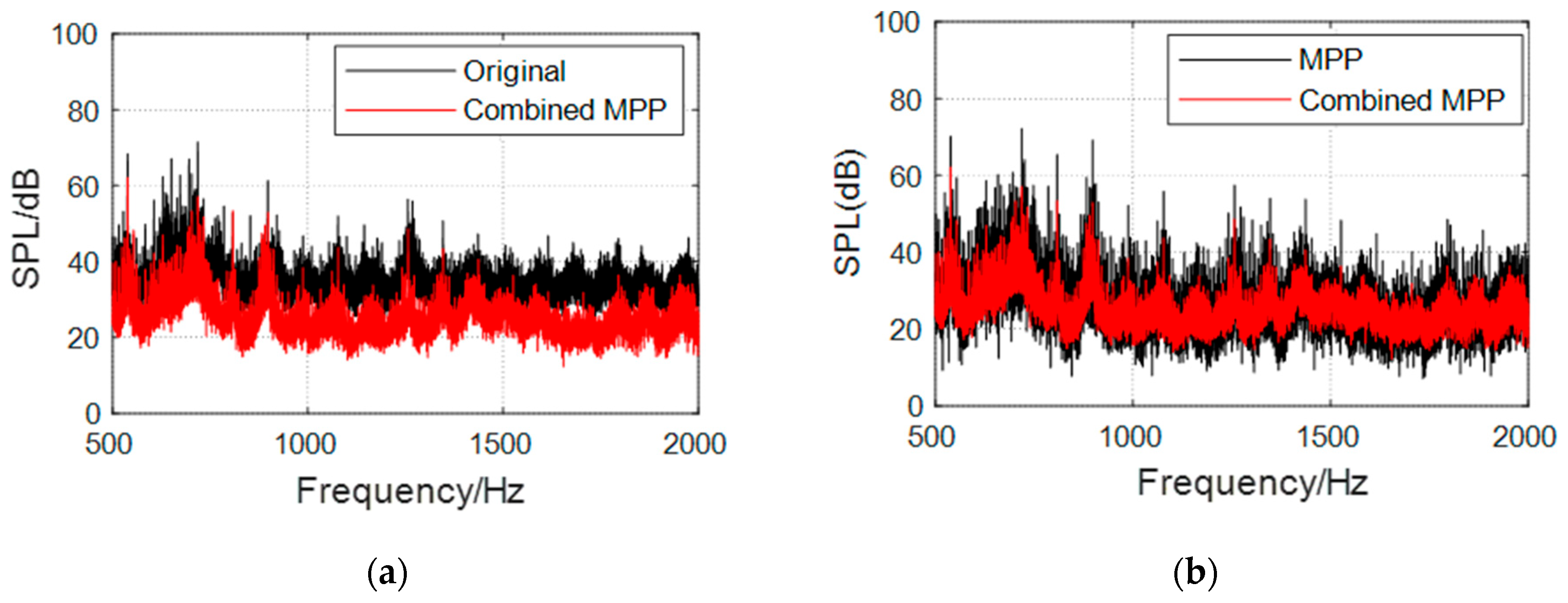

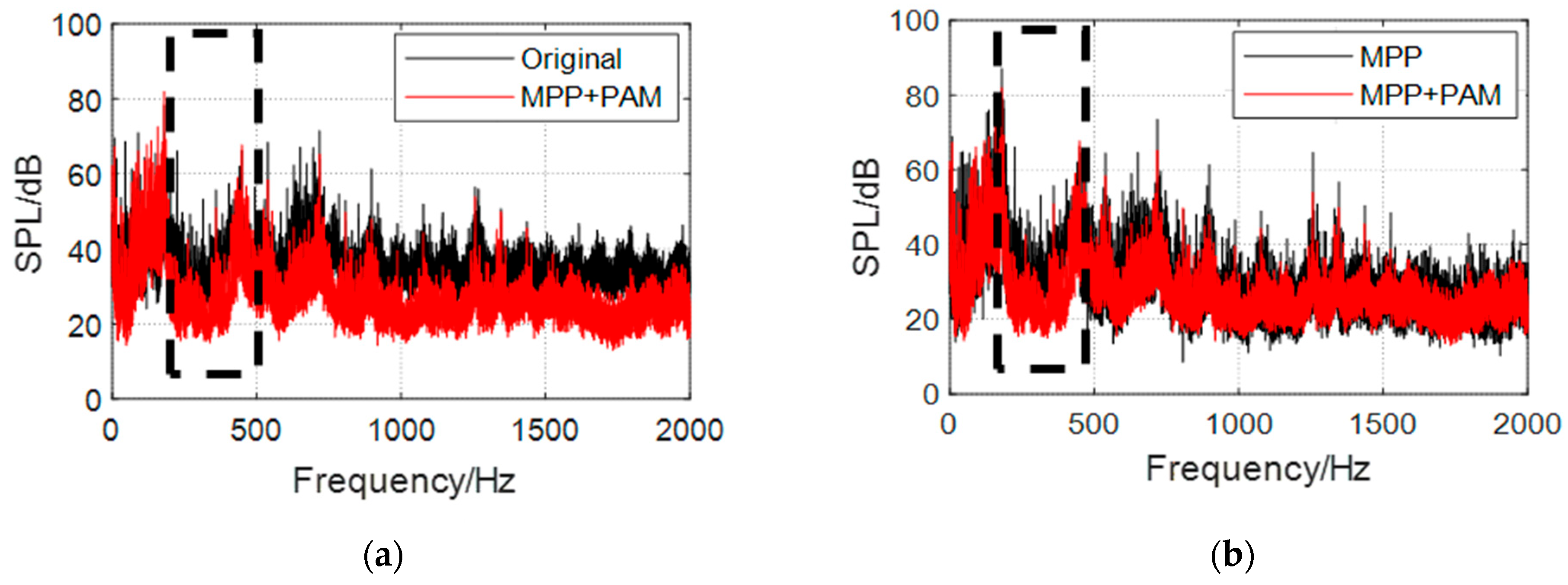

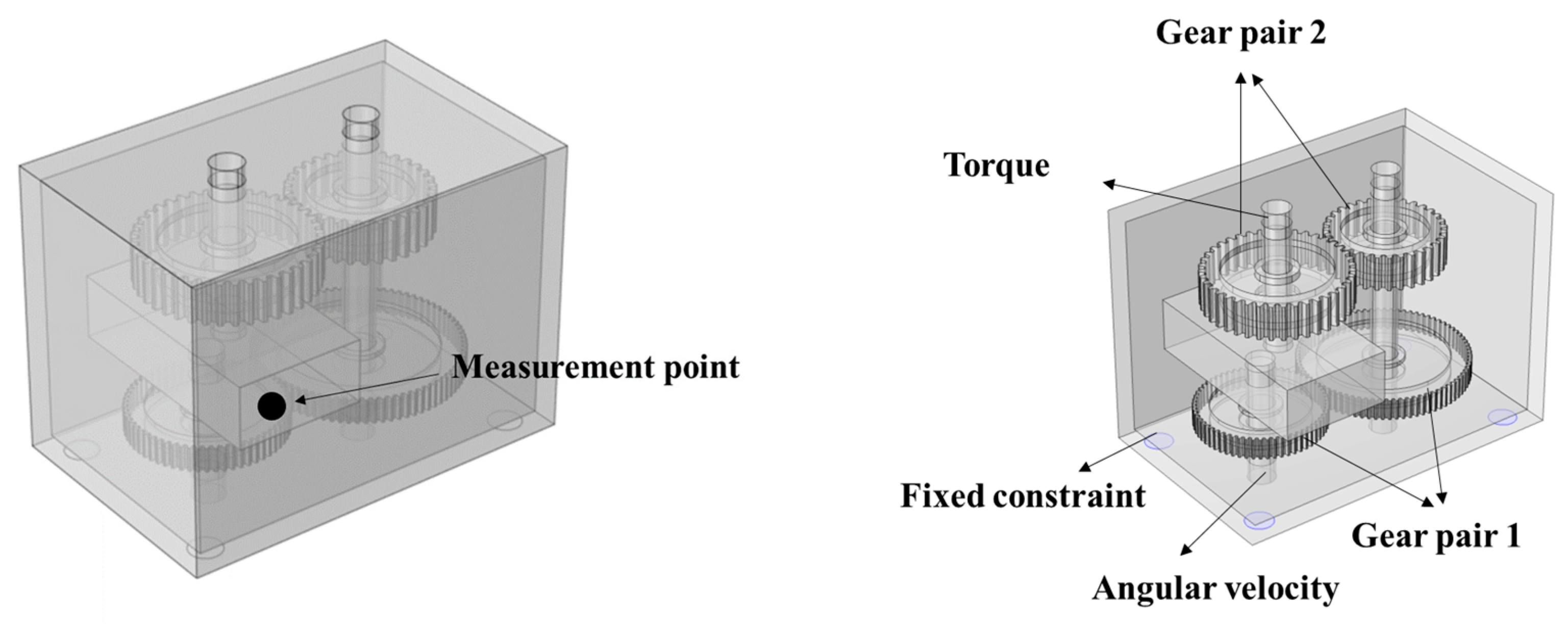

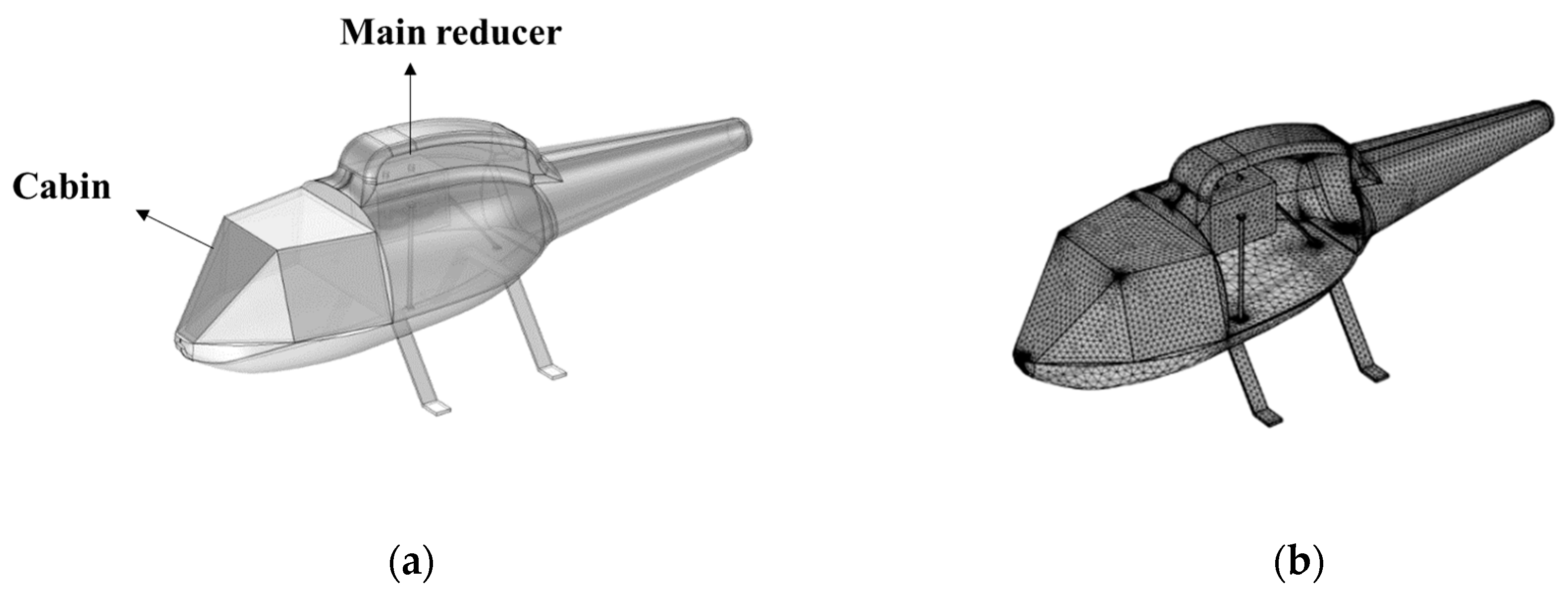
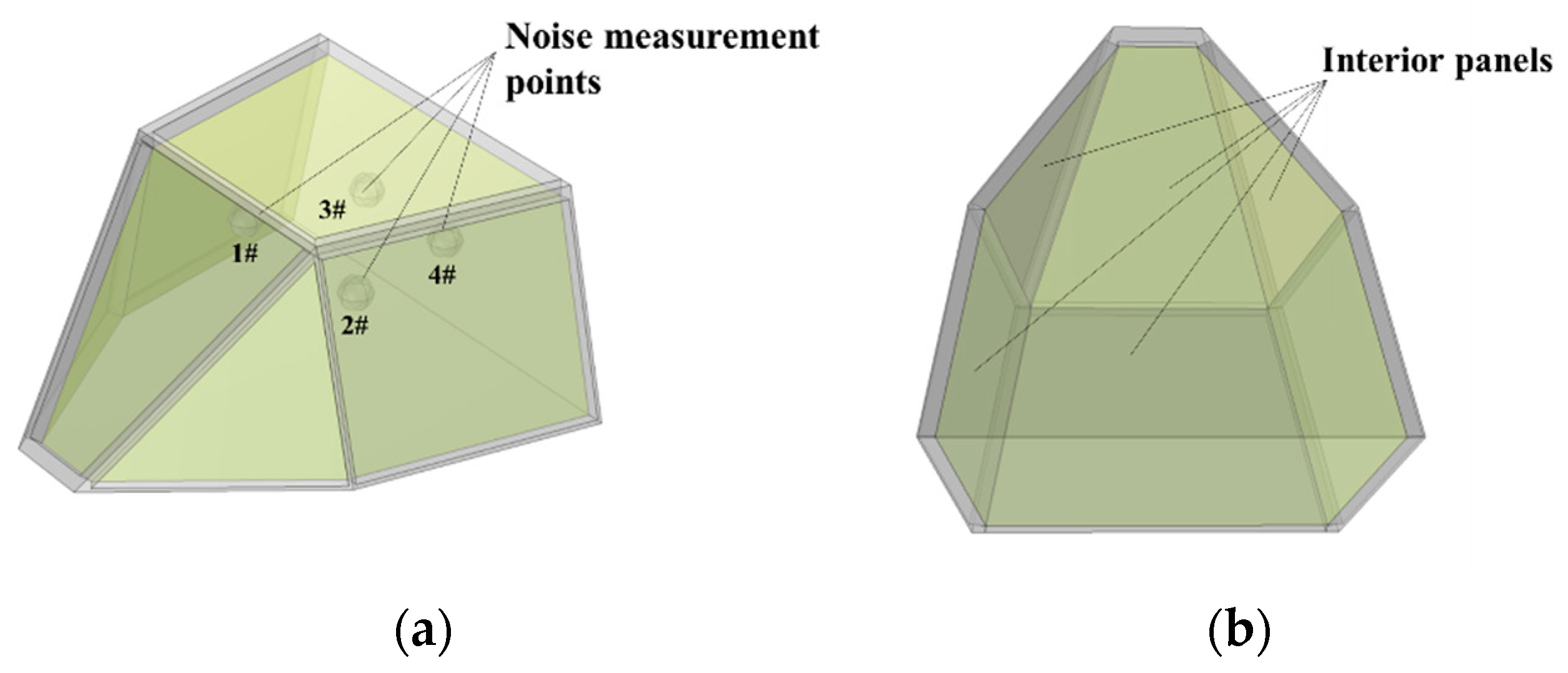

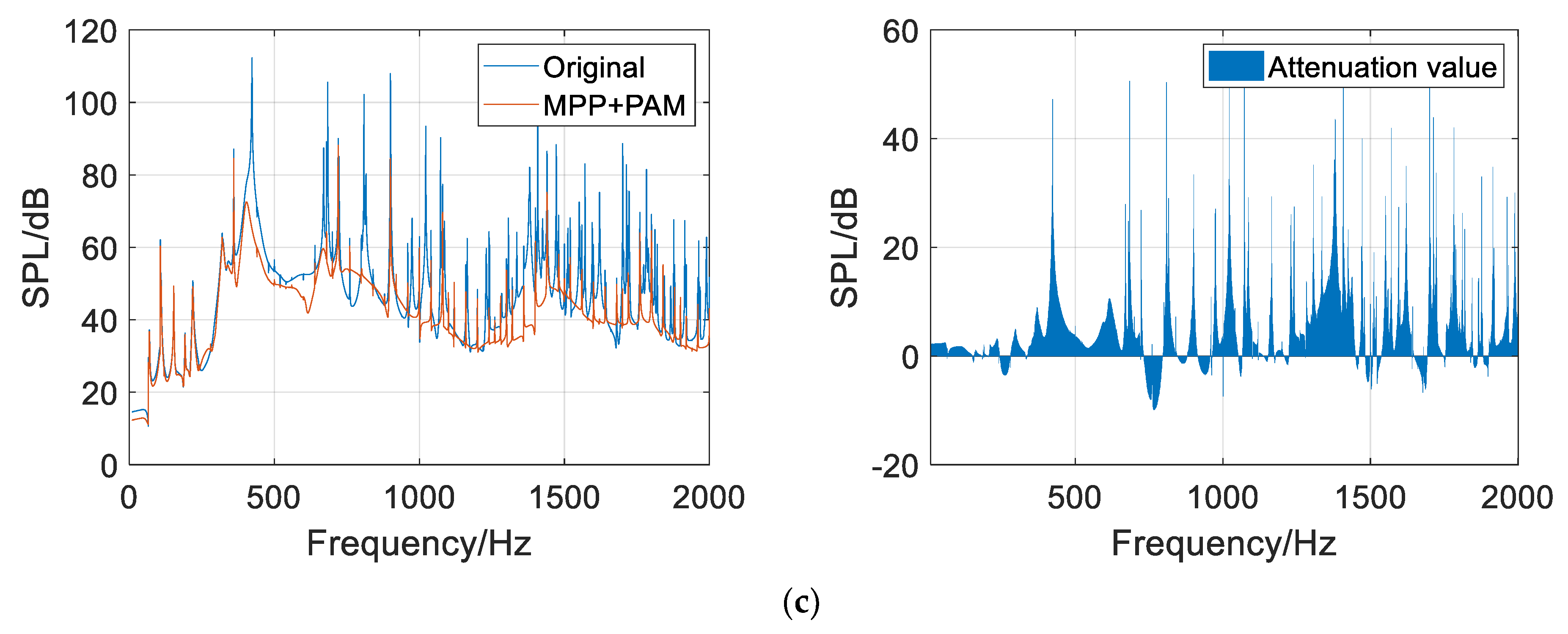
| Parameters | σ (N·s·m-4) | ϕ | α∞ | Λ (μm) | Λ′ (μm) |
|---|---|---|---|---|---|
| Numerical value | 10,500 | 0.995 | 1.0059 | 240 | 470 |
| Structure | Parameters | Numerical Value | Parameters | Numerical Value |
|---|---|---|---|---|
| Combined MPP | Pore size d1 | 0.40 mm | Perforation rate p1 | 2.88% |
| Pore size d2 | 0.57 mm | Perforation rate p2 | 0.94% | |
| Plate thickness t | 1.00 mm | Dorsal cavity depth D | 20 mm |
| Structure | Parameters | Numerical Value | Parameters | Numerical Value |
|---|---|---|---|---|
| MPP+Porous | Pore size d | 0.52 mm | Perforation rate p | 1.11% |
| Plate thickness t | 1.00 mm | Dorsal cavity depth D | 20 mm |
| Structure | Parameters | Numerical Value | Parameters | Numerical Value |
|---|---|---|---|---|
| MPP+PAM | Pore size d | 0.53 mm | Perforation rate p | 0.96% |
| Depth of cavity in front of thin plate D1 | 10 mm | Depth of cavity behind thin plate D2 | 10 mm | |
| Thin plate thickness tp | 0.2 mm | Thin plate length B | 50 mm |
| Equipment | Mode |
|---|---|
| Magnetic powder brake | PB-B2-0.6 |
| Acceleration sensor | LC0119 |
| Microphone | 378B11 |
| Signal conditioner | CM3508 |
| Data collector | NI USB6343 |
Disclaimer/Publisher’s Note: The statements, opinions and data contained in all publications are solely those of the individual author(s) and contributor(s) and not of MDPI and/or the editor(s). MDPI and/or the editor(s) disclaim responsibility for any injury to people or property resulting from any ideas, methods, instructions or products referred to in the content. |
© 2023 by the authors. Licensee MDPI, Basel, Switzerland. This article is an open access article distributed under the terms and conditions of the Creative Commons Attribution (CC BY) license (https://creativecommons.org/licenses/by/4.0/).
Share and Cite
Li, C.; Lu, Y.; Lan, C.; Wang, Y. Noise Reduction in Helicopter Cabins Using Microperforated Panel Composite Sound Absorption Structures. Appl. Sci. 2023, 13, 8153. https://doi.org/10.3390/app13148153
Li C, Lu Y, Lan C, Wang Y. Noise Reduction in Helicopter Cabins Using Microperforated Panel Composite Sound Absorption Structures. Applied Sciences. 2023; 13(14):8153. https://doi.org/10.3390/app13148153
Chicago/Turabian StyleLi, Chenglei, Yang Lu, Chunbo Lan, and Yang Wang. 2023. "Noise Reduction in Helicopter Cabins Using Microperforated Panel Composite Sound Absorption Structures" Applied Sciences 13, no. 14: 8153. https://doi.org/10.3390/app13148153
APA StyleLi, C., Lu, Y., Lan, C., & Wang, Y. (2023). Noise Reduction in Helicopter Cabins Using Microperforated Panel Composite Sound Absorption Structures. Applied Sciences, 13(14), 8153. https://doi.org/10.3390/app13148153







